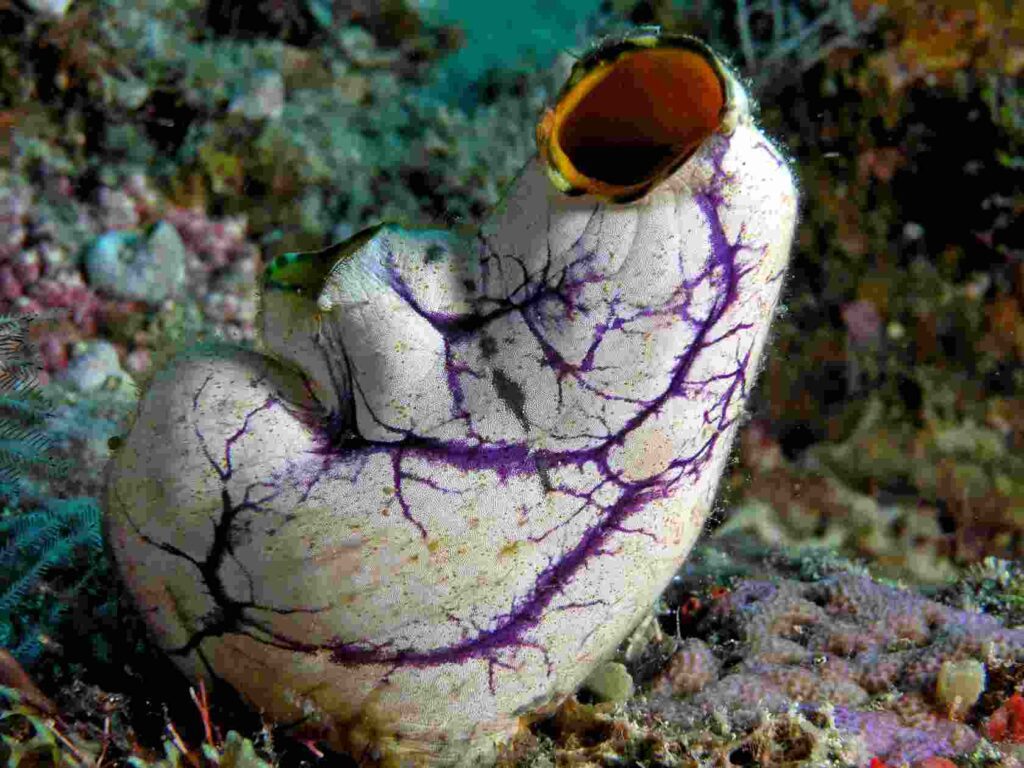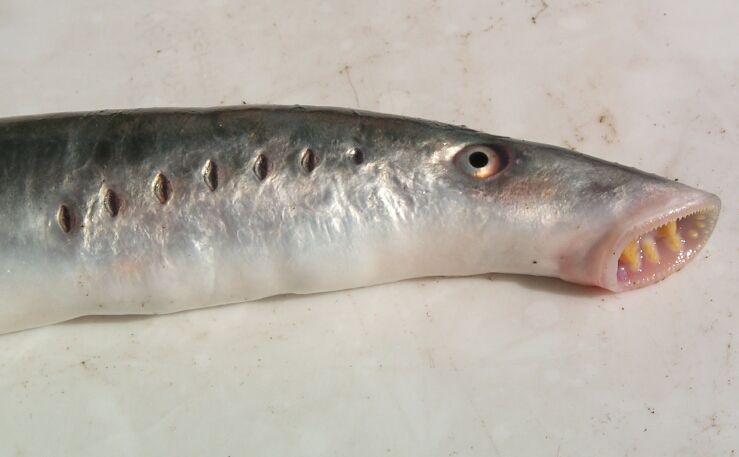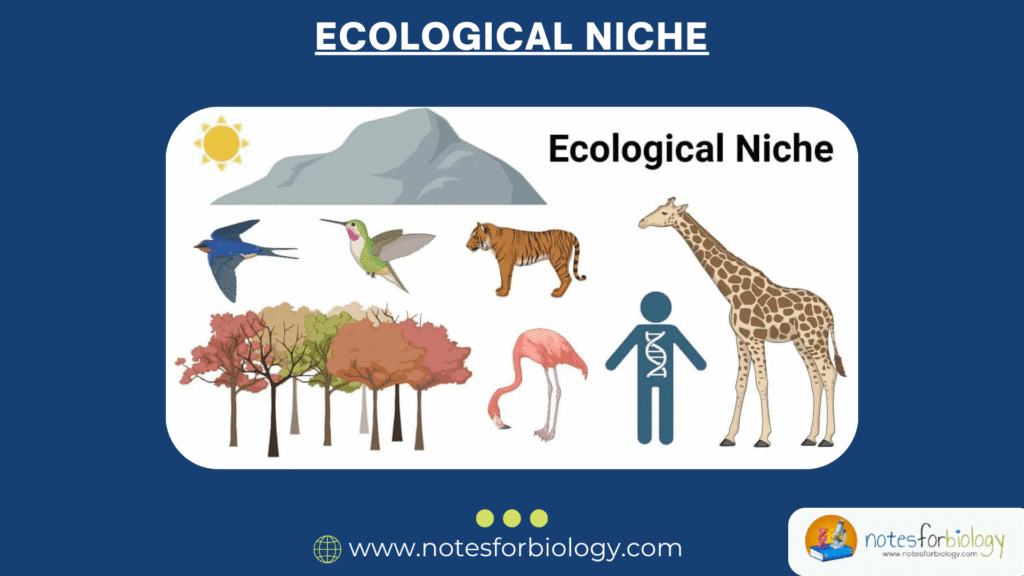Phylum Chordata is one of the most highly evolved and diversified groups in the animal kingdom. It includes a vast range of animals, from simple marine organisms to highly developed mammals such as humans. The term ‘Chordata’ is derived from the presence of a characteristic structure called the notochord, found at some stage of life in all members of this phylum. Besides the notochord, chordates possess several distinct features that separate them from other animal groups.
Phylum Chordata comprises bilaterally symmetrical, triploblastic, coelomate animals that are characterized by the presence of a notochord, a hollow dorsal nerve cord, pharyngeal gill slits, and a post-anal tail at some stage of their development. These features are primarily responsible for placing this group in a distinct phylum within the animal kingdom.
Table of Contents
General Characteristics of Phylum Chordata
Notochord
The notochord is a flexible, rod-like structure composed of large vacuolated cells enclosed within a sheath. It runs along the longitudinal axis of the body between the digestive tract and the nerve cord. In most chordates, it serves as a primary axial skeleton during embryonic development and is later replaced by the vertebral column in higher vertebrates. It provides structural support and defines the primitive axis of the body.
Dorsal Hollow Nerve Cord
Another defining feature of chordates is the dorsal hollow nerve cord, which lies above the notochord. Unlike the nerve cords in other invertebrates, which are solid and ventral, the chordate nerve cord is hollow and located dorsally. It develops into the central nervous system, comprising the brain and spinal cord in vertebrates.
Pharyngeal Gill Slits
Chordates possess a series of paired openings called pharyngeal gill slits in the pharyngeal region, situated behind the mouth. These slits connect the internal pharynx to the external environment. In aquatic chordates, they function in respiration, whereas in terrestrial vertebrates, they appear during embryonic development and subsequently give rise to various structures in the head and neck region.
Post-Anal Tail
A tail extending beyond the anus is another distinguishing feature found in chordates. This post-anal tail is made up of muscles and skeletal elements and plays an essential role in locomotion for many aquatic species. In certain adult chordates, including humans, it is reduced to a vestigial structure called the coccyx.
Closed Circulatory System
Chordates typically possess a closed circulatory system, where blood flows through a network of blood vessels. This system efficiently transports nutrients, gases, and waste products to and from different parts of the body.
Bilateral Symmetry and Triploblastic Organization
The body of a chordate is bilaterally symmetrical, meaning the left and right sides of the body are mirror images. Additionally, chordates are triploblastic, with three embryonic germ layers—ectoderm, mesoderm, and endoderm that give rise to various tissues and organs during development.
Coelom
Chordates are coelomate animals, possessing a true body cavity known as the coelom. This fluid-filled cavity is lined by mesoderm and provides space for the development and suspension of internal organs.
Metameric Segmentation
In many chordates, the body shows metameric segmentation, where it is divided into a series of repeating segments, particularly visible in muscles and vertebrae.
Classification of Phylum Chordata
Phylum Chordata is divided into three major subphyla based on the persistence and development of the notochord and other anatomical features. These are: Urochordata (Tunicata), Cephalochordata, and Vertebrata (Craniata).
Subphylum Urochordata (Tunicata)

General Characteristics
Members of the subphylum Urochordata, commonly known as tunicates, are exclusively marine animals. They are typically sessile or planktonic and have a sac-like body covered by a tough, cellulose-like tunic. The notochord is present only in the larval tail and disappears in the adult form. Similarly, the dorsal nerve cord is retained in the larva but degenerates as the organism matures.
Body Structure
The body of a urochordate is enclosed within a leathery covering, and the adult typically has a barrel-shaped or globular appearance. Water enters the body through an incurrent siphon, passes through the pharyngeal slits, and exits through an excurrent siphon.
Examples
Representative examples of Urochordata include Ascidia, Salpa, and Doliolum.
Subphylum Cephalochordata

General Characteristics
Cephalochordates, or lancelets, are small, fish-like, marine animals that exhibit all chordate characteristics throughout their life. Unlike urochordates, the notochord extends from the anterior to the posterior end and persists into adulthood.
Body Structure
The body is elongated and laterally compressed. Cephalochordates possess a well-developed pharynx with numerous gill slits, and the dorsal hollow nerve cord remains functional throughout life. The post-anal tail aids in locomotion.
Examples
The most widely studied example of Cephalochordata is Branchiostoma (formerly Amphioxus), known for its significance in understanding vertebrate evolution.
Subphylum Vertebrata (Craniata)
General Characteristics
Vertebrates, or craniates, are the most advanced and diverse group within Phylum Chordata. In these animals, the notochord is either entirely replaced or supplemented by a vertebral column composed of vertebrae. Vertebrates also possess a well-developed cranium enclosing the brain and paired sensory organs.
Circulatory and Nervous Systems
They exhibit a highly organized closed circulatory system with a multi-chambered heart. The central nervous system consists of a brain and spinal cord, while peripheral nerves extend to different parts of the body.
Body Division
The vertebrate body is typically divided into a head, trunk, and, in most cases, a tail. Advanced vertebrates display the highest degree of cephalization, with complex sense organs and specialized brain regions.
Major Divisions of Subphylum Vertebrata
Vertebrates are further divided into two superclasses based on the presence or absence of jaws: Agnatha and Gnathostomata.
Superclass Agnatha

Characteristics
Agnatha includes jawless, primitive vertebrates. They possess a persistent notochord and lack paired fins and scales. The mouth is usually circular and sucker-like, and their skeleton is cartilaginous.
Examples
Notable examples include Petromyzon (lamprey) and Myxine (hagfish).
Superclass Gnathostomata
Gnathostomata includes vertebrates with true jaws and paired appendages. The skeleton may be cartilaginous or bony, and the vertebral column replaces the notochord during development.
Further Divisions
Gnathostomata is further divided into two major classes: Pisces (fishes) and Tetrapoda (four-limbed vertebrates).
Class Pisces
Pisces comprises aquatic, gill-breathing vertebrates with fins for locomotion. Their skin is usually covered with scales, and they possess a two-chambered heart. This class includes both cartilaginous fishes (Class Chondrichthyes like sharks and rays) and bony fishes (Class Osteichthyes like salmon and tuna).
Class Tetrapoda
Tetrapoda includes vertebrates with two pairs of limbs adapted for locomotion on land or in water. This class is further divided into four major groups: Amphibia, Reptilia, Aves, and Mammalia.
Class Amphibia
Amphibians lead a dual life, beginning in water as larvae and often moving to land as adults. They breathe through gills, lungs, or skin and have moist, glandular skin without scales. Examples include frogs, toads, and salamanders.
Class Reptilia
Reptiles are cold-blooded vertebrates with dry, scaly skin and lungs for respiration. They lay shelled eggs on land and include lizards, snakes, turtles, and crocodiles.
Class Aves
Birds are warm-blooded, feather-covered vertebrates adapted for flight. They possess beaks, lay hard-shelled eggs, and have a high metabolic rate. Examples include pigeons, eagles, and sparrows.
Class Mammalia
Mammals are warm-blooded vertebrates distinguished by the presence of mammary glands, hair, and a diaphragm. They give birth to live young (with a few exceptions like the platypus) and include humans, dogs, elephants, and whales.
Evolutionary Significance of Phylum Chordata
The phylum Chordata holds immense evolutionary significance due to its position as a bridge between simpler invertebrate animals and highly complex vertebrates, including humans. Several factors highlight the evolutionary importance of chordates:
Origin of a Centralized Nervous System
The presence of a dorsal hollow nerve cord in chordates marked a significant advancement in the evolution of complex sensory and motor functions. It laid the foundation for the sophisticated nervous systems observed in vertebrates.
Development of an Endoskeleton
The notochord, and later its replacement by a vertebral column in vertebrates, facilitated greater structural support and flexibility. This allowed for increased body size, mobility, and the colonization of diverse habitats, including terrestrial environments.
Pharyngeal Gill Slits and Respiratory Adaptations
In aquatic chordates, pharyngeal gill slits played an essential role in filter-feeding and respiration. Over time, these structures evolved to form specialized respiratory systems such as gills and lungs, enabling the transition from aquatic to terrestrial life.
Presence of a Post-Anal Tail
The post-anal tail enhanced locomotion in early aquatic chordates. Even in modern vertebrates, the remnants of this structure contribute to balance, movement, and communication functions.
Metabolic and Hormonal Regulation
The endostyle’s evolutionary transformation into the thyroid gland in higher chordates represents an important development in endocrine regulation, affecting metabolism, growth, and reproductive functions.
These evolutionary advancements enabled chordates to diversify extensively, leading to the emergence of complex vertebrates capable of occupying nearly every ecological niche on Earth.
Comparison of Chordate Subphyla
| Feature | Urochordata | Cephalochordata | Vertebrata |
|---|---|---|---|
| Habitat | Exclusively marine | Exclusively marine | Aquatic and terrestrial |
| Notochord | In larva (tail only) | From head to tail, lifelong | Embryonic, replaced by vertebral column |
| Dorsal Nerve Cord | In larva only | Lifelong | Modified into brain and spinal cord |
| Gill Slits | Numerous, lifelong | Numerous, lifelong | Present (variable in number) |
| Post-Anal Tail | In larva only | Present | Present (may be reduced) |
| Body Covering | Tunic (cellulose-like) | Naked, transparent | Skin with or without scales, feathers, or hair |
| Cephalization | Absent | Poorly developed | Highly developed |
| Circulatory System | Open or simple closed | Closed, no heart | Closed with heart |
| Examples | Herdmania, Salpa | Branchiostoma (Amphioxus) | Fish, Amphibians, Reptiles, Birds, Mammals |
Conclusion
Phylum Chordata represents an evolutionary milestone in the animal kingdom, characterized by the presence of a notochord, dorsal hollow nerve cord, pharyngeal gill slits, and a post-anal tail. Its members exhibit remarkable diversity, ranging from simple, sessile tunicates to highly evolved mammals. The phylum is systematically classified into Urochordata, Cephalochordata, and Vertebrata, with further divisions based on anatomical and physiological specializations. An understanding of Phylum Chordata is essential to comprehend the complexity and evolutionary advancement of animal life on Earth.
The phylum Chordata represents one of the most significant groups in the animal kingdom, characterized by unique anatomical features such as a notochord, dorsal nerve cord, and pharyngeal gill slits. These features highlight their evolutionary significance, marking crucial adaptations in the transition from simple invertebrates to complex vertebrates.
Frequently Asked Questions (FAQ)
Are phylum Chordata vertebrates?
No, not all members of the phylum Chordata are vertebrates. The phylum Chordata includes both vertebrate animals, such as fish, amphibians, reptiles, birds, and mammals, and invertebrate groups, such as tunicates (Urochordata) and lancelets (Cephalochordata). Vertebrates form a major subphylum within the phylum Chordata.
How do phylum Chordata reproduce?
Most chordates reproduce sexually, involving the fusion of male and female gametes. Fertilization can be either external, as seen in many aquatic species like fish and amphibians, or internal, as in reptiles, birds, and mammals. A few chordates, particularly some tunicates, are capable of asexual reproduction or are hermaphroditic, possessing both male and female reproductive organs.
What defines the phylum Chordata?
The phylum Chordata is defined by the presence of five distinctive features at some stage in the animal’s life cycle. These features include a notochord, a dorsal hollow nerve cord, pharyngeal gill slits, a post-anal tail, and an endostyle or its derivative, the thyroid gland.




